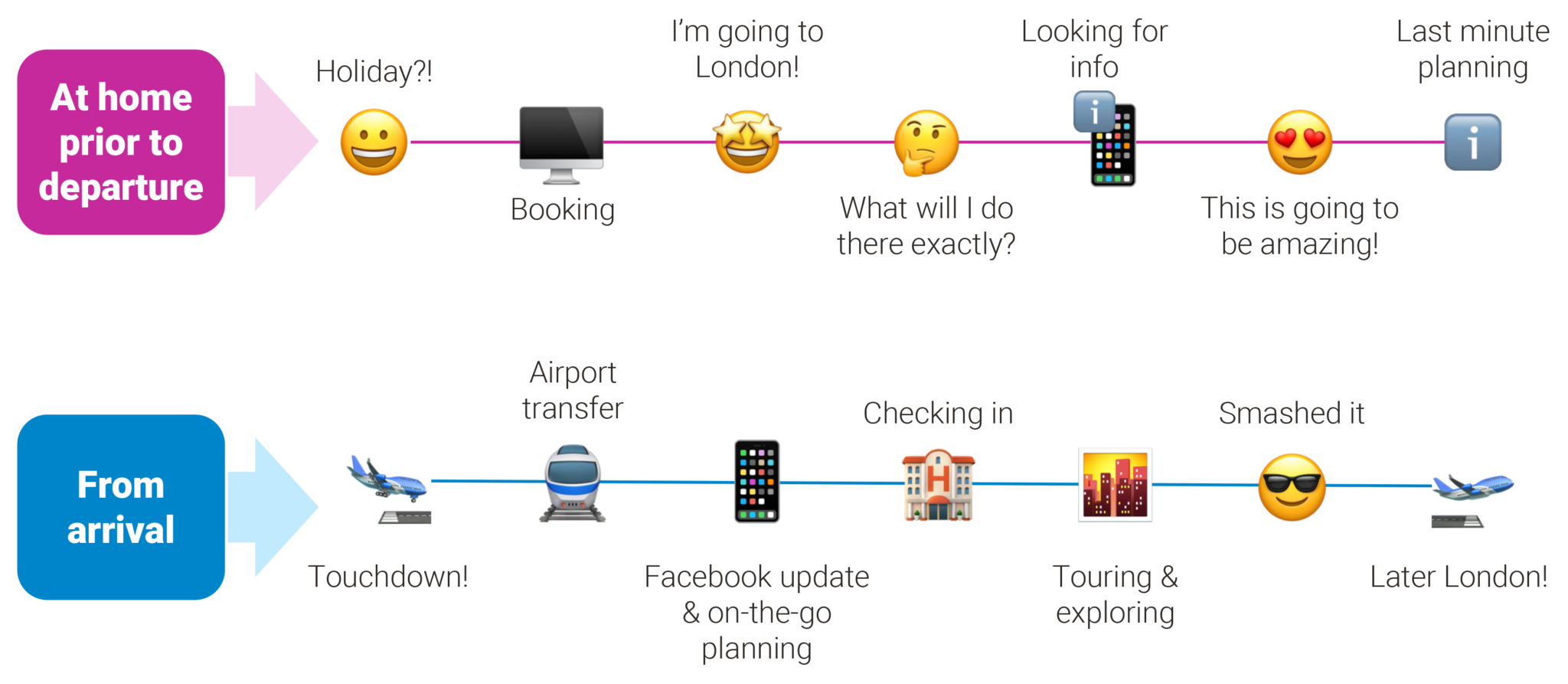
How and when to target travellers for your brand
If you work in travel or tourism, you’ll know that spontaneity versus planning is a key axis along which you can plot your audience. Some of your audience will like to plan ahead – in some cases, very far ahead – whilst others will be more spontaneous. The proportion of planners versus those who leave it to the last minute will vary depending on the nature of your product and brand, and will also vary across multiple markets. Because their path to purchase is different, you will need to think about different messages for these audience types.
Let’s think about a typical path to purchase for the average consumer booking a trip
- Dreaming: There is a trigger for the trip where people start seeking inspiration on destinations.
- Planning: There is the planning stage, where people research and compare options and start to make decisions.
- Trip booking: It’s time to book, usually flights and hotels at this stage, but possibly also car hire and tickets for things to do.
- Anticipating: At this point, the trip is booked but hasn’t happened yet, so there’s a period of anticipating. At this time, people may research in more detail, read reviews and seek out advice, and perhaps book additional elements.
- In-destination: Great, the trip has started. But there are still bookings and decisions to be made during the trip itself, usually on the go and often via mobile. This is where even the most planned travellers are forced to become spontaneous.
- Evaluating: The trip is over and this is when the period of evaluation starts. People tell others about their trip – word of mouth – and also post photos on social media and potentially reviews to sites like TripAdvisor.
Again, how long it takes to move through the six stages will depend on the nature of your product, and how planned versus spontaneous the audience is. But about three months would not be unusual for someone planning a holiday from, say, the United States to London.
To take the example of someone planning a holiday from the US to London, let’s think about the touchpoints available to us as marketers:
This gives us three distinct media phases to fit the consumer journey:

The moments to capture are:

In this example, media formats to think about would include:
- Video: YouTube bumper ads – during the booking & anticipating phases, triggered by key search terms
- Programmatic Display: e.g. with Adara in this travel example – targeting Americans travelling to London and segmenting them by arrival date to offer different messages. A mixture of formats will generate impact.
- Facebook advertising: targeting people in-city (in this example, London) – showing video ads in response to US tourist search signals
- Out of Home: for example, advertising on trains to central London from popular tourist airports (Heathrow, Gatwick, Stansted); advertising in hotels (e.g. sponsoring hotel wifi across chains); tube advertising
Summary:
- Spontaneity versus planning is a key attribute of travel audiences
- Understanding how this affects the path to purchase for your product is key
- Consider that this varies across cultures (so a local in-market expert will be able to guide you)
- Reflect on the various touchpoints that the path to purchase represents
- Plan your media accordingly
- Devise messages that resonate at each stage of the journey
 Tom Montague | Head of Content, Oban International
Tom Montague | Head of Content, Oban International
Oban International is the digital marketing agency specialising in international expansion. Our LIME (Local In-Market Expert) Network provides up to date cultural input and insights from over 80 markets around the world, helping clients realise the best marketing opportunities and avoid the costliest mistakes.
